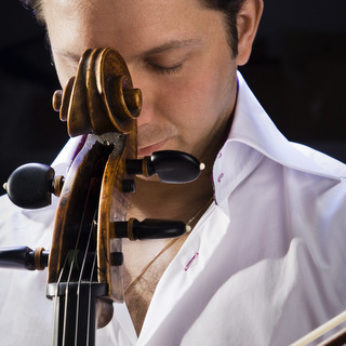Composer: Gaspar Cassadó (b. 1897 - d. 1966)
Performance date: 28/06/2015
Venue: St. Brendan’s Church
Composition Year: 1926
Duration: 00:19:11
Recording Engineer: Richard McCullough, RTÉ lyric fm
Instrumentation: vc
Instrumentation Category:Solo
Artists:
David Cohen -
[cello]

Gaspar Cassadó is often compared to the
violin-virtuoso, Fritz Kreisler, who also wrote and performed his own concertos,
showpieces, and finger-stretching recital encores that display the performer’s
wit, agility, and lighter side. Cassadó was a child prodigy and, when only nine
years old, had the good fortune to be taken on by the 21-year-old cellist Pablo
Casals as his first student. Cassadó considered Casals to be his greatest
musical influence and his spiritual father.
Cassadó later moved to Paris to continue his
studies with Casals at the same time also pursuing his studies in composition,
working closely with such masters as Manuel de Falla and Maurice Ravel. Their
stylistic influence can be heard in Cassadó’s 1926 Suite for Solo Cello, which
was inspired by Casals’ legendary performances of the Bach Cello Suites. The
story of Casals passionate advocacy of these extraordinary works is well-known
and his performances served as a catalyst for a vast outpouring of 20th Century
solo cello works by major composers as diverse as Zoltán Kodály, Max Reger,
Paul Hindemith, Benjamin Britten, George Crumb, and Gaspar Cassadó.
Cassadó’s Suite for Solo Cello combines the Baroque
formalism and dance orientation of Bach’s suites with his own native Spanish
flair. The first movement begins with a free Preludium that evolves into a Zarabanda,
a dignified Spanish dance related to the Baroque Sarabande. The movement quotes Zoltán Kodaly’s Sonata for Cello
Solo and, reflecting Cassadó’s studies with Ravel, makes extensive use of the
motive that begins the famous flute solo from the ballet Daphnis et Chloe.
The second movement is written in the form of a
two-part Sardana. Beginning with a
characteristically slow, introductory section (in classic saradanas the first tirada
was danced with the arms down), the music soon breaks into an animatedly rustic
dance in 2/4 (the second tirada was
usually danced with the arms up). The jauntily rhythmic flavor of the movement
makes this the most overtly danceable of the three.
Cassadó continues to honour antique Spanish
folkdance styles by basing the final movement largely on the jota, a dance originally performed in
colourful costumes and accompanied by castanets. The movement begins slowly
with a ruminative Intermezzo
featuring lyrical, five-beat phrases. This gradually gives way to the more
vigorous, swinging jota. The movement
alternates between the introspection of the intermezzo
and the extroverted, flamenco-like jota,
bringing the suite to a lively, Spanish-style conclusion.
Copyright © 2024 West Cork Music. All rights reserved.
Designed and developed by Matrix Internet